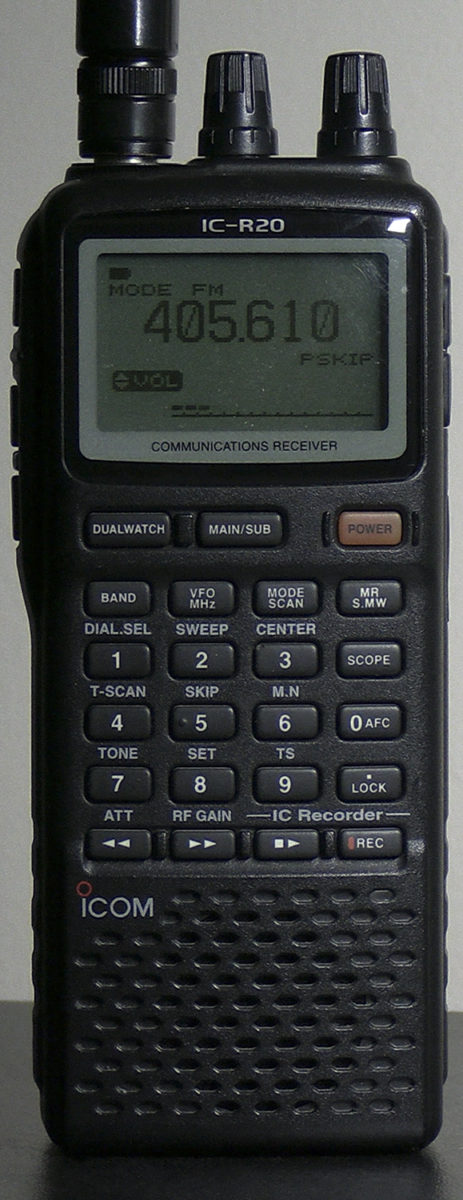The National Weather Service is in the midst of a sweeping radiosonde change at all of their Weather Forecast Offices (WFO). I first learned of this change while watching a video of the NWS Birmingham weather balloon launch on 19 November. Around one minute into the video meteorologist Gerald Satterwhite mentions a new radiosonde system:
As an active tracker of their radiosondes this piqued my interest. Here is what I have been able to discover about this new system.
Why Change?
According to a document titled Statement of Work (SOW) for Radiosonde Frequency Migration Project (RFMP) Radio Frequency Survey published by the NWS in December 2019, “The NWS has chosen to replace the existing radiosonde observations network operating on frequency channels between 1675 and 1683 MHz with a new network using the 400.15 – 406 MHz frequency band to avoid causing interference with meteorological satellites downlinks”.
Current System
Currently the NWS uses the Radiosonde Replacement System (RRS) which consists of a parabolic tracking antenna used to receive the signal from Lockheed-Martin LMS-6 and Vaisala RS92-NGP radiosondes. The tracking antenna is located underneath the radome on top of the upper air buildings at the WFOs.

New System
The new system is known as the Manual Radiosonde Observation System (MROS), so named because the NWS will no longer need to mechanically track the radiosonde once it is released. Instead they will use simple omnidirectional and helical antennas to receive the signal from Graw DFM-17 and Vaisala RS41-NG radiosondes. The NWS has ordered over 161,000 of the new radiosondes. That’s a three year supply for the twice daily flights at each of the sixty-nine WFOs.

NWS Brownsville (TX) was the first WFO in the United States to switch to MROS in October 2021. This was followed by two more in October, Amarillo TX and Blacksburg VA. Since then the NWS has started ramping up the installations. Each location has a 30-day period during which they may perform dual launches using the old and new system.
Reno, NV 01 Nov 2021 Graw DFM-17 Tampa Bay, FL 15 Nov 2021 Graw DFM-17 Springfield, MO 15 Nov 2021 Graw DFM-17 Buffalo, NY 15 Nov 2021 Vaisala RS41-NG Dodge City, KS 29 Nov 2021 Vaisala RS41-NG Birmingham, AL 06 Dec 2021 Graw DFM-17 Boise, ID 06 Dec 2021 Vaisala RS41-NG Morehead City, NC 06 Dec 2021 Graw DFM-17 Tiyan, Guam 06 Dec 2021 Vaisala RS41-NG North Platte, NE 13 Dec 2021 Graw DFM-17 Elko, NV 03 Jan 2022 Graw DFM-17 Midland/Odessa, TX 03 Jan 2022 Graw DFM-17 Riverton, WY 03 Jan 2022 Graw DFM-17 Salt Lake City, UT 10 Jan 2022 Graw DFM-17 Sterling, VA 10 Jan 2022 Vaisala RS41-NG Greensboro, NC 24 Jan 2022 Graw DFM-17 Lincoln, IL 24 Jan 2022 Graw DFM-17 Atlanta, GA 24 Jan 2022 Graw DFM-17 Tallahassee, FL 31 Jan 2022 Vaisala RS41-NG
Both of the stations I track locally, Atlanta and Birmingham, are switching to the DFM-17 radiosonde. Compared with the LMS-6 radiosonde that each uses now, the DFM-17 is much lighter (2.2 ounces vs 8.7 ounces) and considerably smaller (3.5 x 2.6 x 1.7 inches vs 6 x 5 x 3 inches). That weight savings should equate to cost savings since they will be using less lifting gas.
Hobbyist Tracking
As you can see above, NWS Birmingham was scheduled to start using MROS on December 6th. On the 6th and 7th I was only able to find the signal from the LMS-6. Tonight I was having a hard time locating the LMS-6 signal despite a track predicted to pass nearly straight overhead. After searching through the 403 MHz band I found a signal at 405.610 MHz. When I fed the signal to Sonde Monitor I was excited to see it was a DFM-17 radiosonde!

I was able to receive the signal with an Airspy SDR connected to an attic mounted Scantenna. Even with the DFM-17 low on the horizon I was also able to receive the signal from inside my house with a Diamond RH77CA antenna connected to an Icom R20 receiver.

This means no more hauling a parabolic antenna up to Pine Mountain to track radiosondes. Woohoo!

